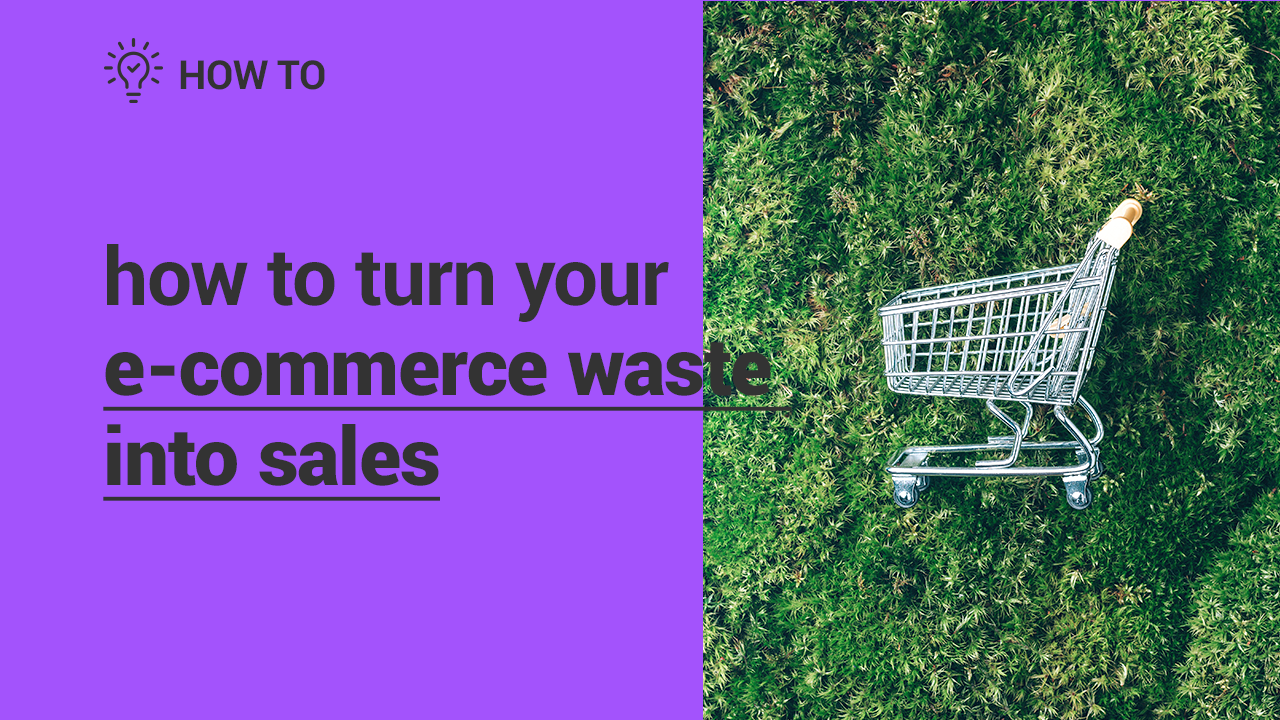
Shopify tips: how to turn your e-commerce waste into sales
Nowadays the retail landscape is very competitive. One of the main challenges faced by Shopify merchants is dealing with “hard to sell” items. These include products such as nearly expiring food, damaged goods, refurbished electronics, and customer returns. These items take up valuable storage space and also pose a risk of becoming wasted inventory or Dead Stock which leads to a multitude of detrimental impacts on retail businesses.
It is a significant capital investment that fails to generate returns. These funds could have been allocated more efficiently within your business. Moreover, the storage of unsold inventory incurs ongoing costs, taking up valuable space. It is susceptible to depreciation and obsolescence over time and damage or expiry further devalues it, worsening financial losses.
This phenomenon also negatively impacts cash flow, limiting resources available for other business activities. Lastly, dead stock complicates analyzing inventory turnover rates and sales forecasting, hindering strategic planning.
In this scenario, optimizing inventory management and mitigating waste are crucial for achieving long-term success.
How can you avoid dead stock?
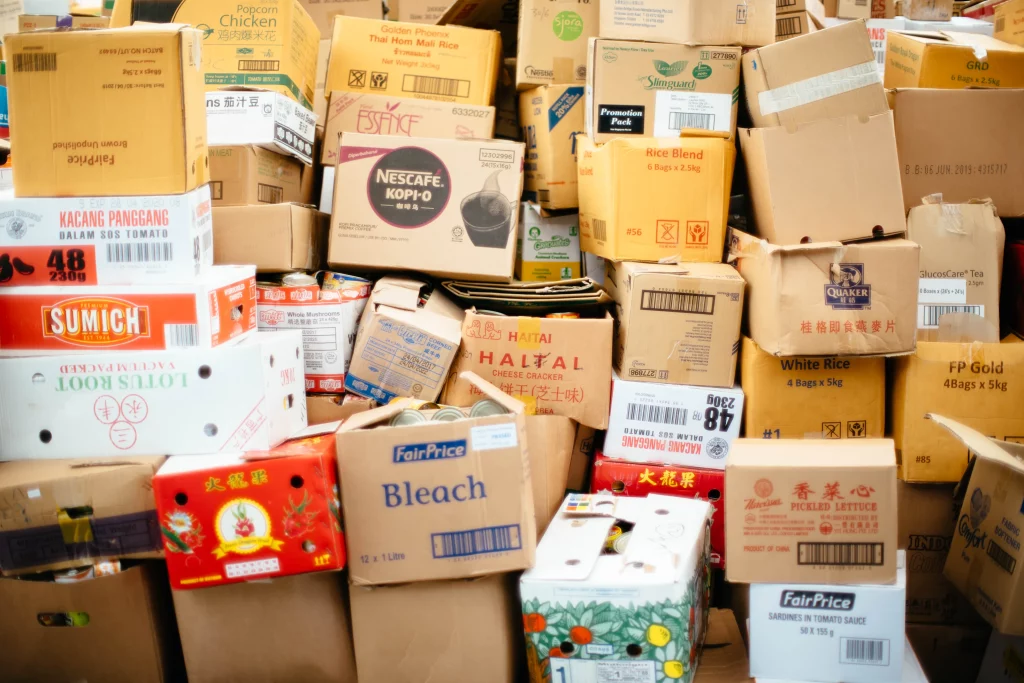
Here’s what Shopify suggests
- Use inventory management software to alert you to issues, so they can be addressed in a timely way.
- Order smaller quantities when offering new products until you know how they perform, even if the per unit cost is higher.
- Survey customers to learn what other products they want.
- Base new product offerings on industry and customer research rather than intuition or personal interests.
- Set reorder points to ensure you request the correct order quantity and prevent overstocking.
How can you solve it?
To enhance sales and clear dead stock efficiently, consider offering customers free gifts or bundling products. Free gifts with purchases increase order value and create a positive shopping experience, potentially leading to repeat purchases. Similarly, bundling related products at a single price boosts perceived value and helps move excess inventory, especially when pairing slow-moving items with top sellers. Additionally, hosting clearance sales both online and in physical stores can generate cash flow while freeing up warehouse space. Starting with modest discounts and escalating as needed can effectively liquidate excess inventory and expand the customer base.
Above all, the disposal of unsold or expired products contributes to environmental issues, emphasizing the need for sustainable solutions.
What are the main challenges we need to confront?
Food Waste
The United Nations Environment Programme’s 2021 Food Waste Index estimates that food waste from households, retail establishments and the food service industry totals 931 million tonnes each year.
“If food loss and waste were a country, it would be the third biggest source of greenhouse gas emissions. Food waste also burdens waste management systems, exacerbates food insecurity, making it a major contributor to the three planetary crises of climate change, nature and biodiversity loss, and pollution and waste. This is why Sustainable Development Goal 12.3 aims to halve food waste and reduce food loss by 2030.” – Inger Andersen, Executive Director, United Nations Environment Programme.
This staggering amount contrasts sharply with the plight of over 870 million individuals experiencing hunger and food insecurity worldwide.
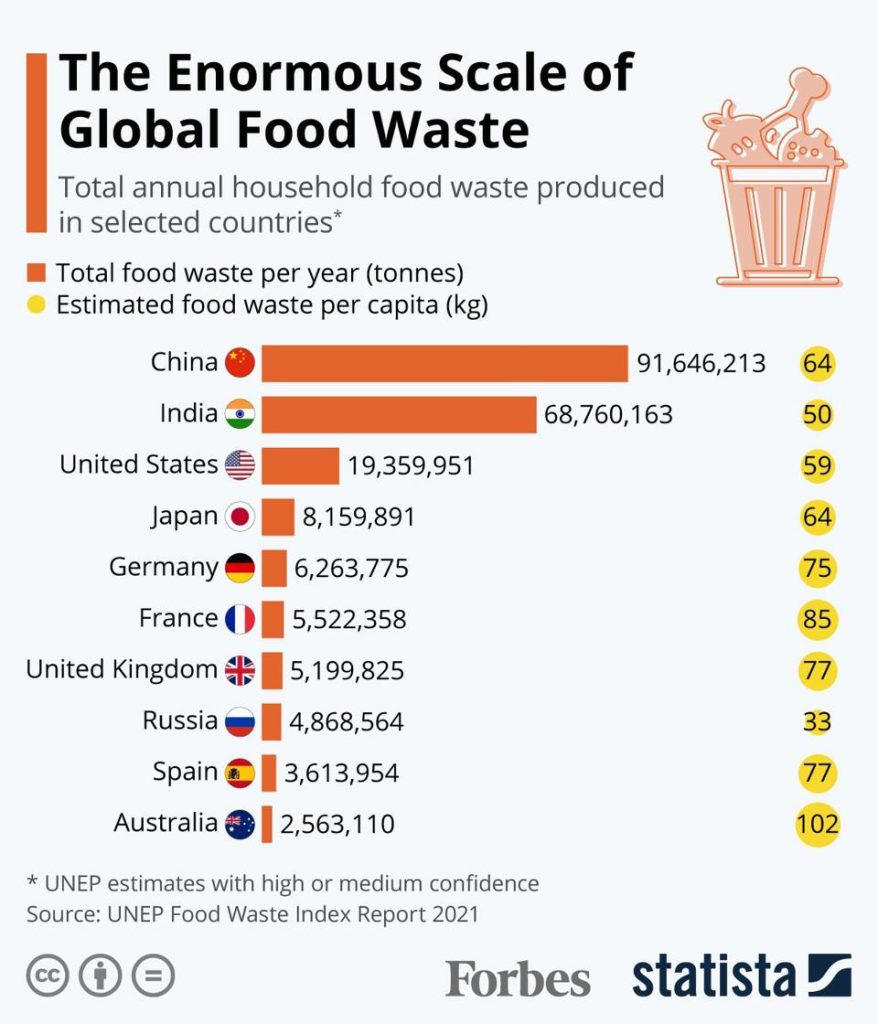
E-Waste
E-waste refers to all items of electrical and electronic equipment that have been discarded as waste without the intent of re-use.
According to the Global E-waste Monitor 2020 by the United Nations the volume of electronic waste generated worldwide in 2019 was roughly 54 million metric tons. Several factors such as increased spending power and the availability of electronics have fueled e-waste generation in recent decades, making it the fastest growing waste stream worldwide. This trend is expected to continue, with projections showing that by 2030, annual e-waste generation worldwide will have increased by approximately 30%.
The continent with the highest share (24.9 million tons) is Asia, while Europe holds the highest amount of technological waste per capita (16.2 kg).
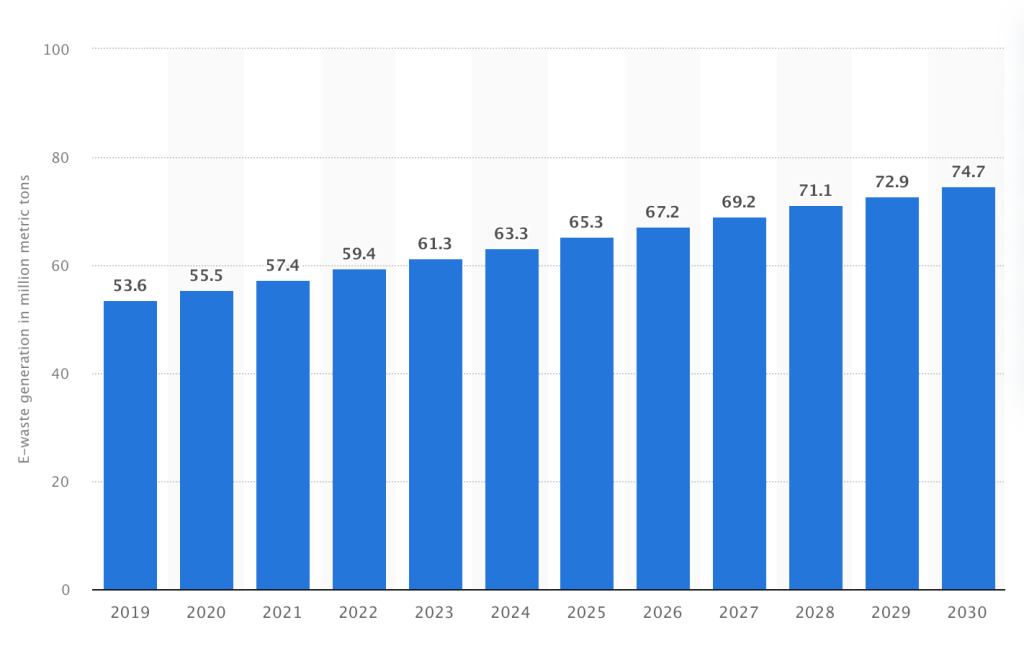
What if you could turn these challenges into opportunities?
Trend Alert! China’s Near-Expired Food Market Surges in 2020
In 2020, a new trend emerged in China focused on near-expired foods, with a market size of 30 billion yuan ($464 billion). Inspired by Wefood’s success in Europe and America, this movement has captured the interest of Gen Z consumers who now purchase and consume these items. This practice not only offers discounts to consumers but also helps address food waste in Chinese cities, where approximately 18 billion kilograms of food are wasted annually. According to iMedia Consulting’s “2020 China’s Near-Expired Food Industry Market Analysis and Consumer Research Report,” nearly half (47.8%) of near-expired food consumers are aged 26–35. Online communities like the “I Love Near-Expired Food” group on Douban have gained over 80,000 members since its launch in September 2020. Discussions on youth engagement with near-expired food on Weibo have attracted over 100 million readers, while XiaoHongShu hosts over 3,800 relevant remarks on the topic.
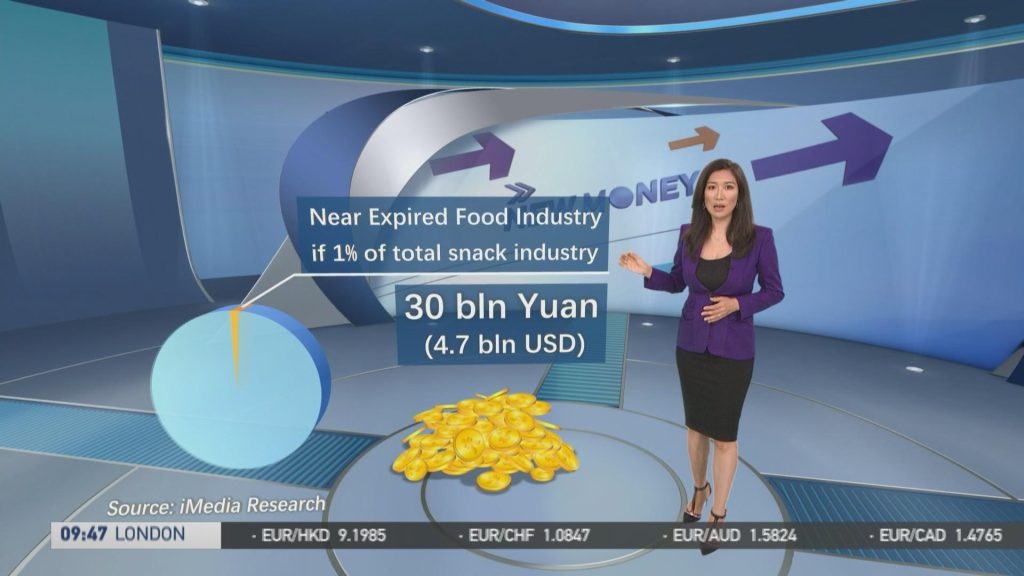
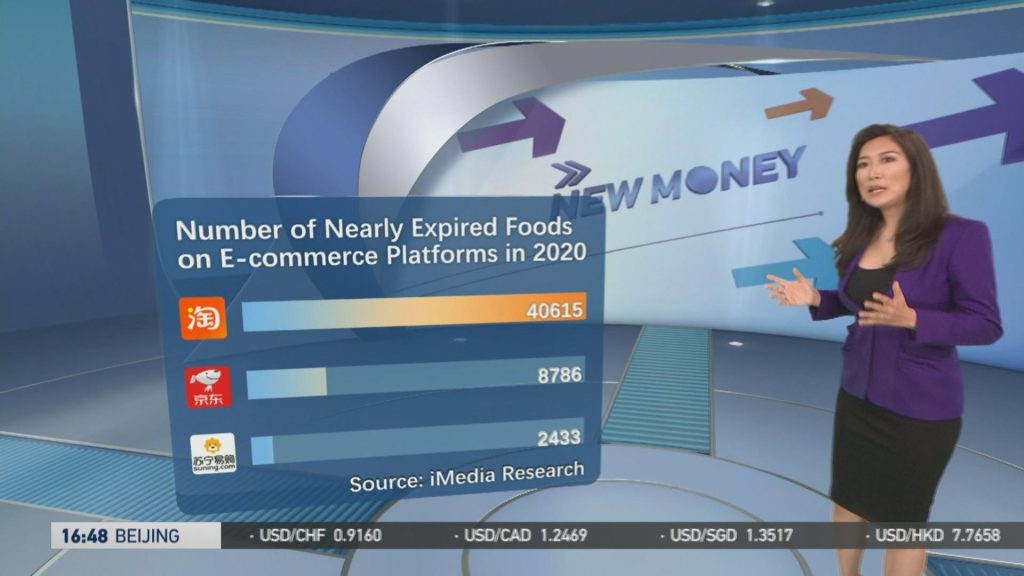
A Growing Market: Refurbished Electronics
According to Coherent Market Insights, the global refurbished electronics market is estimated to be valued at US$ 48.29 billion in 2023 and is expected to exhibit a CAGR of 10% during the forecast period (2023-2030). Statista also reports that between 2022 and 2030, the global electronics market size is forecast to increase considerably. Surveys by the EU Commission show a growing interest, with 59% of Europeans considering buying refurbished smartphones in 2021, up from 53% in 2020.
A significant trend is the increasing prevalence of certified refurbishment programs. Both original equipment manufacturers (OEMs) and authorized refurbishers are implementing these programs, subjecting devices to rigorous testing, repair, and quality checks before resale. This trend is expected to persist throughout the forecast period, reflecting the growing demand for reliable refurbished electronics.
Also, the refurbished electronics market, aligning with circular economy principles, emphasizes device reuse, repair, and recycling. This trend is growing as consumers and businesses recognize environmental benefits and collectively work to reduce electronic waste.
Size of the global electronics recycling market from 2020 to 2030
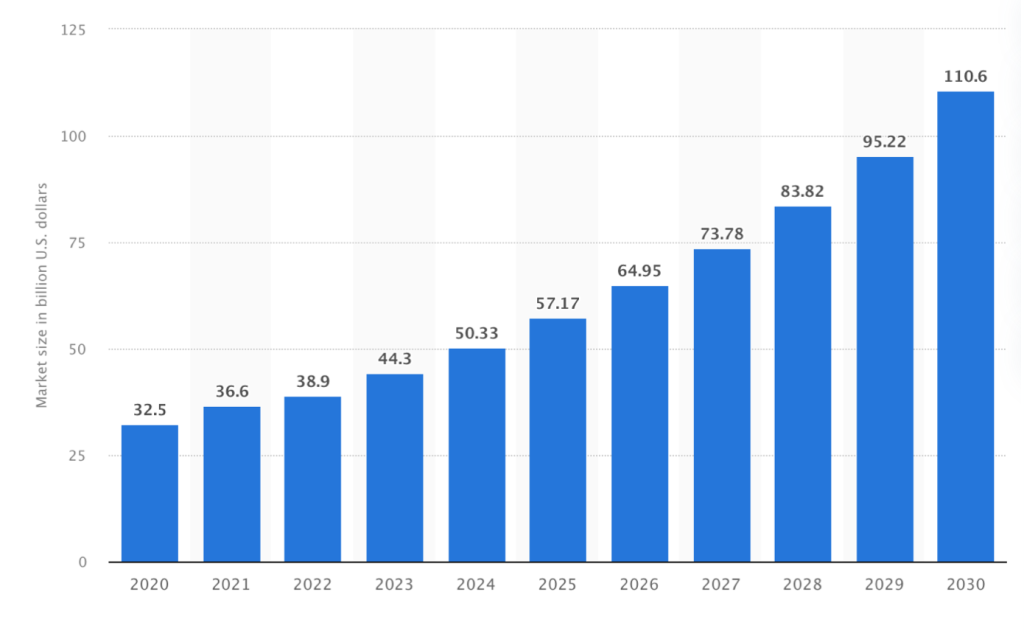
You can do it too! Turn Trash into Treasure with NoWaste
NoWaste is your strategic partner in maximizing profitability and minimizing environmental impact. It goes beyond a simple app; it’s a comprehensive solution packed with powerful features to help you.
Here’s how you can drive profitability and reduce waste in 5 simple ways:
1. Tailored item categories just for you: NoWaste gives you the power to select the specific category of items you want to sell—whether they’re expired, refurbished, damaged, or returned. It’s as simple as adjusting a few settings, and you’re all set to start selling.
2. Automatic discount for expiring products: NoWaste offers automatic discounts for nearly expiring food and goods, allowing you to attract customers with attractive prices and prevent waste.
3. Offer your customers more choices: with NoWaste, you can showcase a wider range of discounted product alternatives to your customers, encouraging sales and minimizing waste of unsold inventory.
4. Stay informed with handy widgets: you can use widgets to keep your customers informed about additional deals and promotions. This not only drives sales but also helps free up valuable warehouse space.
5.Make your offers irresistible with product info pop-ups: with NoWaste you can set up pop-ups to provide customers with essential product information, making your offers irresistible and increasing your chances of making a sale.
Ready to turn waste into profit and embrace a sustainable future? By partnering with us, you unlock a robust ecosystem that enhances profitability, minimizes waste, and strengthens your brand’s eco-conscious image. Visit NoWaste today and discover how this innovative tool can transform your Shopify store.




